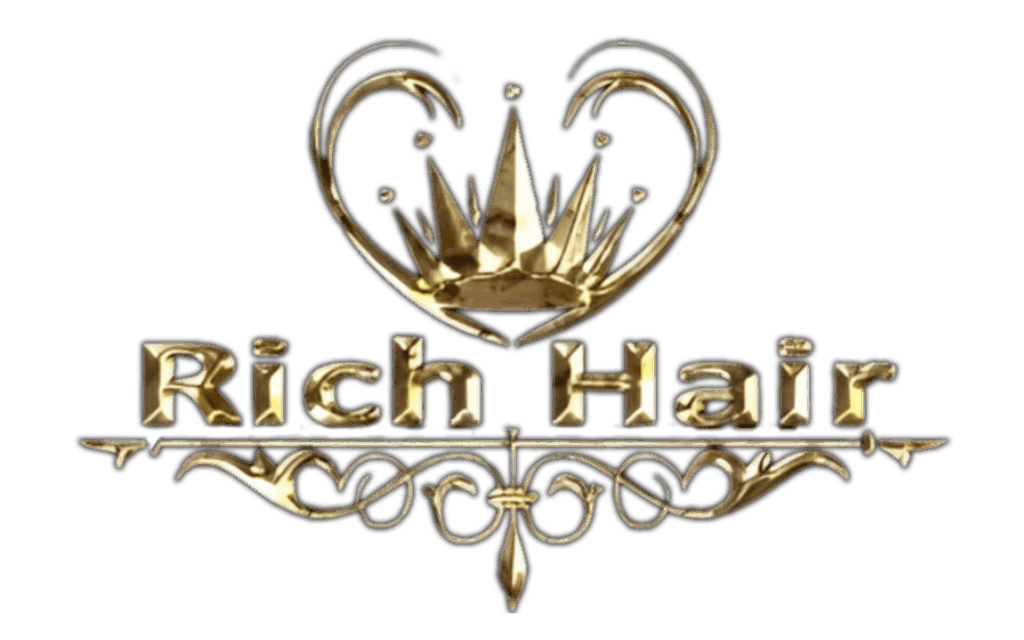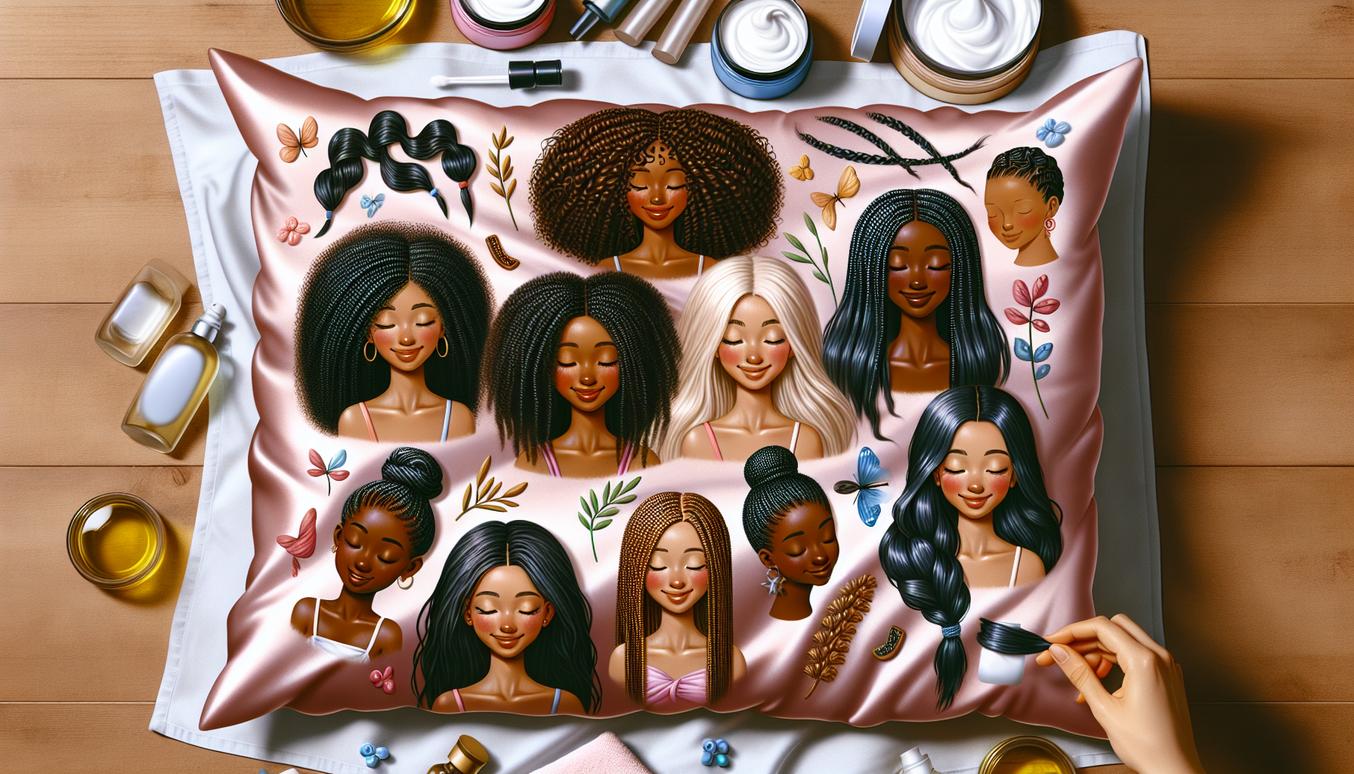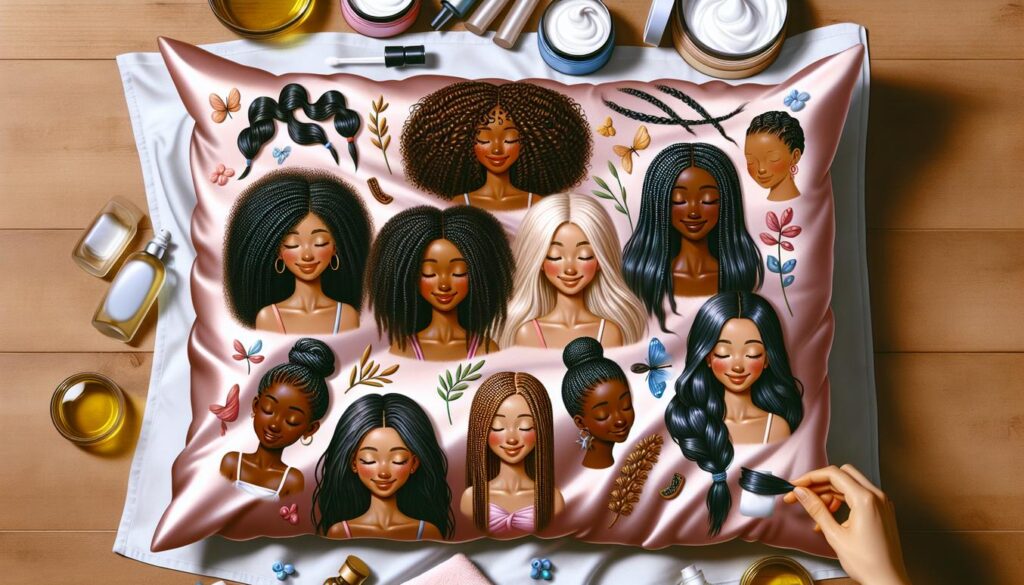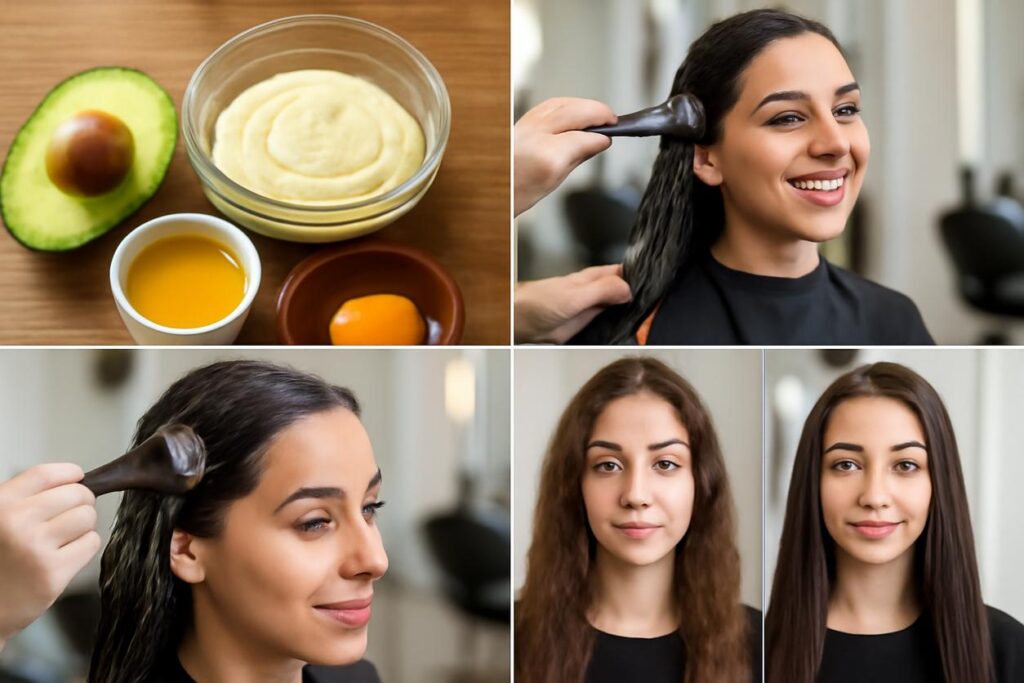Unlock the full potential of your natural texture with our ultimate guide. Embracing your curls is a journey of discovery, and with the right knowledge and techniques, you can achieve the healthy, defined, and vibrant hair you have always wanted. This comprehensive guide is packed with actionable curly hair tips for 2025, blending the science behind your strands with practical, low-fuss routines. Whether you are just beginning your curl journey or looking to refine your existing regimen, these insights will help you master your mane.
Table of Contents
- Why Curls Respond Differently to Moisture and Styling
- How to Identify Your Curl Pattern and Hair Porosity
- Daily Maintenance Rituals for More Defined Curls
- Wash Day Explained Step by Step
- Deep Conditioning and Nutrition for Stronger Strands
- Styling Techniques That Minimise Breakage
- Ingredient Guide: What to Choose and What to Avoid
- Simple DIY Masks and Treatments from Kitchen Staples
- Climate, Travel and Seasonal Care for Curls
- Troubleshooting: Frizz, Limp Curls and Product Buildup
- Frequently Asked Questions and Myth Busting
Why Curls Respond Differently to Moisture and Styling
Understanding the “why” behind your curls is the first step toward effective care. Unlike straight hair, which grows from a round follicle, curly hair grows from a flat, oval-shaped follicle. This unique origin forces the hair strand to twist and turn as it grows, creating its beautiful spirals. However, this structure also presents challenges.
The natural oils produced by your scalp, known as sebum, have a difficult time traveling down the winding path of a curly hair shaft. This leaves the mid-lengths and ends prone to dryness. Furthermore, the bends in the hair strand create raised points along the cuticle, which is the hair’s outer protective layer. A raised cuticle allows moisture to escape easily and lets humidity in, which is the primary cause of frizz. Therefore, the most essential of all curly hair tips is to focus on adding and sealing in moisture to keep the cuticle smooth and the hair shaft hydrated.
How to Identify Your Curl Pattern and Hair Porosity
While often talked about, your curl pattern (the shape of your strands) is only one piece of the puzzle. It’s a useful starting point for finding visual inspiration and understanding potential styling outcomes. Patterns typically range from Type 2 (wavy) to Type 3 (curly) and Type 4 (coily), with sub-classifications from A to C indicating the tightness of the pattern.
Arguably more critical is your hair porosity, which dictates how well your hair absorbs and retains moisture. Knowing this will revolutionize your product choices and application techniques.
- Low Porosity: The hair cuticles are tightly packed and flat. Hair takes a long time to get wet and a long time to dry. It is prone to product buildup because products tend to sit on top of the hair rather than being absorbed.
- Medium Porosity: The cuticles are looser, allowing moisture to penetrate and be retained effectively. This is often considered the “ideal” porosity as it requires the least maintenance.
- High Porosity: The cuticles are raised or have gaps, either from genetics or damage. Hair absorbs moisture quickly but also loses it just as fast, leading to frizz and dryness.
A simple way to test your porosity at home is the water glass test. Take a clean, product-free strand of hair and drop it into a glass of room temperature water. If it floats, you likely have low porosity. If it sinks slowly, you have medium porosity. If it sinks quickly, you have high porosity.
Daily Maintenance Rituals for More Defined Curls
What you do between wash days is just as important as the wash day itself. The key is protection and refreshment. At night, friction from a cotton pillowcase can cause frizz and disrupt your curl pattern. To prevent this, sleep on a satin or silk pillowcase, or protect your hair in a satin-lined bonnet or a loose “pineapple” (a high, loose ponytail on top of your head).
Morning Quick Fix Routine
You don’t need to rewash your hair every day to bring your curls back to life. A simple refresh can do wonders:
- Hydrate: Lightly spritz your hair with water from a spray bottle. You don’t need to saturate it, just dampen it enough to reactivate the products from the previous day.
- Reapply Product: Mix a small, pea-sized amount of leave-in conditioner or curl cream with water in your hands and gently glaze it over your hair’s canopy.
- Scrunch: Gently scrunch your hair upwards towards the scalp to encourage curl formation.
- Dry: Let your hair air-dry for a few minutes or use a diffuser on a low-heat, low-speed setting for a quick volume boost. This is one of the quickest and most effective curly hair tips for second-day hair.
Wash Day Explained Step by Step
Transform wash day from a chore into a restorative ritual. This is your chance to deeply cleanse, hydrate, and nourish your hair. The frequency of your wash day depends on your hair and lifestyle, but most curlies find success with washing 1-3 times per week.
Pre-Wash Tips
Before you even step into the shower, a pre-wash treatment, or “pre-poo,” can make a huge difference. Applying an oil (like coconut, olive, or avocado oil) to your dry hair for at least 30 minutes before cleansing helps protect your strands from being stripped of their natural oils by shampoo. This is also the perfect time to gently detangle with your fingers, working from the ends up to the roots to minimize breakage.
Cleansing and Conditioning Sequence
The right sequence in the shower sets the foundation for great curls.
- Cleanse the Scalp: Use a sulfate-free shampoo or co-wash (a cleansing conditioner). Focus the product entirely on your scalp, using the pads of your fingers to massage and lift away dirt and buildup. The runoff will be enough to cleanse the lengths of your hair without drying them out.
- Condition and Detangle: This is a crucial step. Apply a generous amount of conditioner from the mid-lengths to the ends. While the conditioner is in your hair, use your fingers or a wide-tooth comb to gently detangle. Never, ever use a brush on wet curly hair without conditioner, as this is a recipe for breakage.
- Squish to Condish: After detangling, cup your hair in your hands and scrunch it upwards towards the scalp while rinsing. This technique helps the hair absorb more moisture and encourages curl clumps to form.
Deep Conditioning and Nutrition for Stronger Strands
Think of deep conditioner as an intensive treatment for your hair. Aim to use a deep conditioner or hair mask at least once a week for 15-30 minutes. There are two main types:
- Moisturizing Deep Conditioners: These are rich in hydrating ingredients and are perfect for dry, brittle hair.
- Protein Deep Conditioners: These help fortify the hair structure and are ideal for damaged, high porosity, or limp hair.
If your hair feels mushy and overly soft, it may need protein. If it feels rough and snaps easily, it likely needs moisture. A healthy balance is key. True hair health also starts from within. A diet rich in vitamins and minerals is essential for building strong hair. Key nutrients include biotin, iron, zinc, and protein. For more information on hair nutrition, you can explore resources like the National Institutes of Health’s Office of Dietary Supplements.
Styling Techniques That Minimise Breakage
How you apply your styling products can make or break your results. Always apply products to soaking wet hair—this helps distribute the product evenly and lock in maximum moisture before frizz has a chance to form.
- Raking: Use your fingers like a rake to evenly distribute product through your hair section by section.
- Praying Hands: Place a section of hair between your palms (as if in prayer) and glide your hands down the hair shaft. This smooths the cuticle and helps form curl clumps.
- Scrunching: Gently cup the ends of your hair and scrunch upwards towards the root to enhance your natural curl pattern.
- Plopping: After applying products, you can “plop” your hair into a cotton t-shirt or microfiber towel for 10-20 minutes. This absorbs excess water without creating frizz and enhances curl definition. From there, you can air-dry or use a diffuser.
Ingredient Guide: What to Choose and What to Avoid
Navigating product labels can be confusing. Here is a simplified guide to ingredients that are generally beneficial or detrimental for curly hair. Finding the right curly hair tips often starts with understanding what you are putting on it.
| Ingredients to Choose | Ingredients to Avoid |
|---|---|
| Humectants: Glycerin, aloe vera, honey (draw moisture into the hair) | Sulfates: Sodium Lauryl Sulfate (SLS), Sodium Laureth Sulfate (SLES) (harsh detergents that strip natural oils) |
| Emollients: Shea butter, mango butter, natural oils (soften and smooth the hair cuticle) | Drying Alcohols: Alcohol denat, isopropyl alcohol (can dehydrate the hair) |
| Proteins: Hydrolyzed keratin, silk amino acids (strengthen the hair shaft) | Non-Water-Soluble Silicones: Dimethicone, amodimethicone (can cause buildup, preventing moisture from entering) |
| Fatty Alcohols: Cetyl, stearyl, and cetearyl alcohol (are moisturizing and provide slip) | Mineral Oil and Petrolatum: Creates a heavy barrier that can lead to buildup and weigh down curls. |
Simple DIY Masks and Treatments From Kitchen Staples
You don’t need expensive products to give your hair a treat. Your kitchen holds powerful ingredients for a quick hair mask.
- Intense Moisture Mask: Mash half a ripe avocado and mix with one tablespoon of olive oil. Apply to clean, damp hair, leave on for 20-30 minutes, and rinse thoroughly. Avocado is rich in fatty acids and vitamins that deeply nourish the hair.
- Gentle Protein and Shine Mask: Whisk together a half-cup of plain yogurt with one tablespoon of honey. The lactic acid in yogurt gently cleanses while the protein strengthens, and honey adds shine and acts as a natural humectant. Apply for 20 minutes before rinsing.
Climate, Travel and Seasonal Care for Curls
Your curls can react differently depending on the weather. In high humidity, your hair will try to draw moisture from the air, causing it to swell and frizz. Combat this by using products with anti-humectants (like certain silicones or natural oils) to seal the cuticle. In dry climates or cold winter months, your hair will lose moisture to the air. Focus on layering hydrating products like leave-in conditioners and creams. When traveling, consider packing concentrated or solid versions of your favorite products and always protect your hair from sun, salt, and chlorine with a leave-in conditioner containing UV filters or by wearing a hat.
Troubleshooting: Frizz, Limp Curls and Product Buildup
Even with a great routine, you may encounter some common curly hair issues. Here are some quick fixes:
- Frizz: This is almost always a sign that your hair is thirsty. Ensure you are using enough conditioner and leave-in, applying products to very wet hair, and avoiding rough towels and dry brushing.
- Limp Curls: If your curls look stretched out and lack volume, they might be over-moisturized or weighed down by heavy products. Try using a clarifying shampoo to remove buildup and consider incorporating a light protein treatment to restore structure.
- Product Buildup: If your hair feels greasy, dull, or your scalp is itchy, it’s time to clarify. Use a designated clarifying shampoo once or twice a month to reset your hair, allowing it to better absorb moisture and nutrients.
Frequently Asked Questions and Myth Busting
Let’s debunk some common myths and answer frequent questions with some of our final curly hair tips.
- Myth: You shouldn’t wash curly hair often.
Busted: A healthy scalp is the foundation for healthy hair. While you may not need to wash daily, you should cleanse your scalp regularly to remove dirt, oil, and buildup. Find a frequency that works for you. For more on hair health, see this general guidance from the National Health Service. - Myth: Oils moisturize your hair.
Busted: Water is the ultimate moisturizer. Oils do not hydrate; they seal in the moisture that is already present in the hair shaft. Always apply oils on top of a water-based product like a leave-in conditioner for best results. - Myth: There is one perfect curly hair routine.
Busted: The best routine is the one that works for your unique hair, lifestyle, and environment. Use these tips as a guide, but don’t be afraid to experiment and listen to what your hair needs. The structure of hair is complex, and individual needs vary greatly.
Embracing your curls is a rewarding process of learning and self-expression. By understanding the science of your hair and applying these practical curly hair tips with consistency, you are well on your way to achieving your healthiest hair ever in 2025 and beyond.






